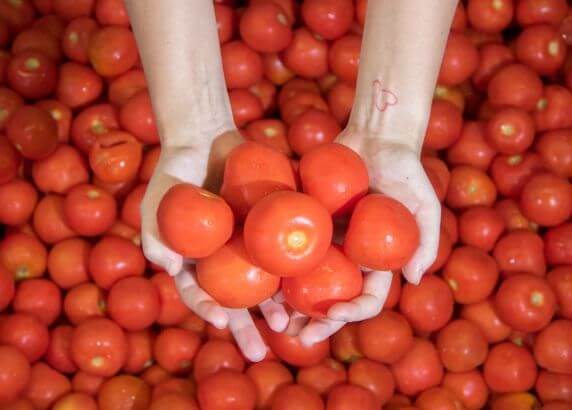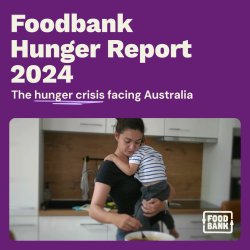The Facts
Hello, we’re Foodbank. We believe everyone should have access to good food no matter their situation. We’re here for the everyday Australians who are going without. We are working hard to change that.
In Australia, we provide food and grocery relief to 2,929 front-line charities and 3,220 school breakfast programs to help feed people in need. Last year alone, we sourced enough food for 92 million meals.
Explore the facts of food insecurity in Australia.

Research and Reports
We are Australia’s definitive source of information on food insecurity and food relief. We publish several reports throughout the year, all of which can be accessed here.

Foodbank Hunger Report 2024
Now in its 11th year, the report reveals the widening gap between those managing to adapt to rising costs and those being left behind.

Foodbank Hunger Map
This groundbreaking tool provides a detailed snapshot of food insecurity across Australia, offering unparalleled insights into the depth and scale of the challenge.

Food waste in Australia
Ending food waste plays a big role in ending hunger, and everyone has a part to play; from production, right through to the way that we as consumers choose to shop.
Hunger in Queensland
- Close to 400,000 households experienced severe food insecurity in the last 12 months
- Close to 700,000 households experienced food insecurity in the last 12 months
- 44% of Australia’s low-income households (earning less than $30,000 per year) are experiencing food insecurity.
- Food insecurity is being felt more acutely in the regions (36%) compared to metropolitan areas (28%).
- Food relief support from family and friends has dropped to 23% in 2024, compared to 27% in 2023.
- Food insecure households increased in their awareness of where to seek food relief support to 47% in 2024 (vs 36% in 2023).
- In 2024, 50% of severely food insecure households had adults not eating for whole days because they can’t afford food.
- 32% of all Queensland households are experiencing food insecurity.
 Contact us
Contact us Log in
Log in



